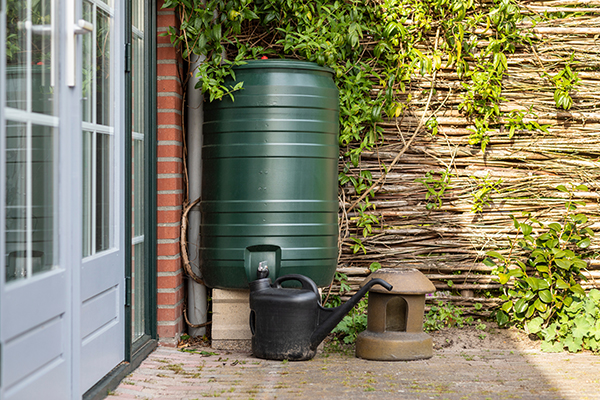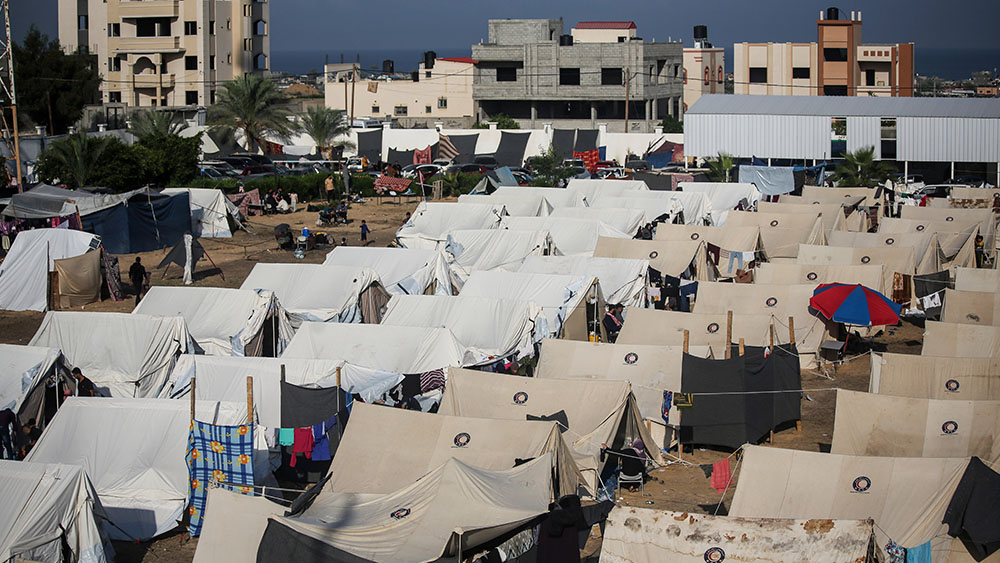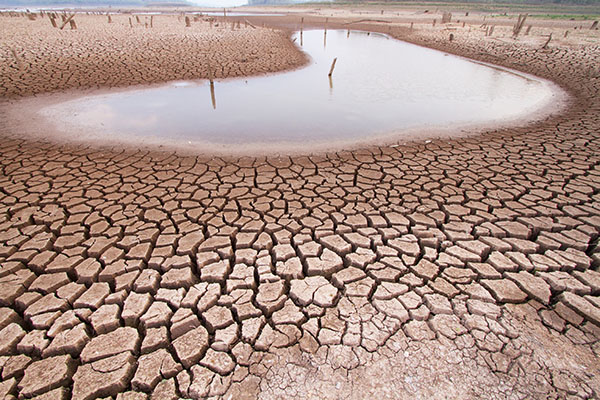
Some options include installing a well with a solar-powered pump on your homestead and learning how to harvest rainwater. (h/t to PrepperWebsite.com)
Why do you need alternative strategies for a water shortage?
You can stock up on enough bottled water so your family has enough water to drink during a long-term survival disaster, but how do you know when you have enough water?
According to minimum recommendations, you should have at least one gallon of water per person. It is also best to keep a three-day supply on hand at all times.
However, if the weather is hot you may need twice as much water. This still doesn't include the water you need for washing, flushing the toilet, watering the garden or for your pets and livestock.
During the first day or two without running water, you can find water in places like toilet tanks, water heaters and swimming pools. But after these supplies are depleted, locating water will be an ongoing effort.
You should also remember that even if these alternative sources are available in your area, other people will be heading for the same water sources when SHTF. If you don't want to fight other people just to get more water for your family, you should use other means to get the water you require.
Survival scenarios also highlight the need to plan ahead and get prepared beforehand, especially if you have a home garden and livestock that will require water.
If you are concerned about where to get water when SHTF, below are some tips on how to get more water when your supply runs out:
Install a well with a solar-powered pump
People who live in rural areas use well water, which is ideal because it is often a reliable source of water, except when there is no electricity to operate the pump.
To avoid this issue, you can get a solar-powered pump for the well in your homestead. If you have a well, consider getting a solar-powered pump before disaster strikes so you can rest easy knowing that you can still access the water in your well even during a power outage.
While this option is the most expensive on the list, it is also one worth considering since it offers the most reliable supply of water. (Related: Prepping tips: How to survive with a limited water supply.)
Harvest rainwater
Even non-preppers can learn how to harvest rainwater, and this prepping skill will come in handy when you are experiencing a disrupted water supply.
You can either splurge on a quality setup with gutters feeding into a storage tank, or you can choose something simple like a rain barrel with a filter. Whatever your budget, you need to store the collected water in a covered container to prevent mosquitoes from using the water as a breeding ground.
Covering the rainwater you gathered can also help prevent the water from evaporating.
If your house doesn't have gutters, you can use the channels in your roof that divert water into a stream off the rooftop. Simply arrange containers underneath that area to catch the rainwater.
For example, you can get your roofer to add diverters that will direct water off the front of your roof so you can gather the rainwater in a tank or rain barrel when it rains.
Use swales
Before SHTF, you can also use swales to store rainwater in your home garden.
Swales are water-harvesting ditches. However, unlike drainage ditches that cut across the contour of the land to speed water along, swales are built "on contour" to slow water down and sink it into the earth.
Swales built on contours collect water and help to recharge groundwater tables. They help to control erosion and are designed to convey excess rainwater into their ditch-like interior. Swales hold the water until it is gradually filtered through plants and soil back into the area.
You don't need special equipment to build a swale. Get a shovel, a pick and some stakes, then be ready to use a bit of elbow grease. But if you are not strong enough to dig a swale yourself, you can make things easier by borrowing or renting a backhoe.
The size of your swale will depend upon the volume of water your area receives during a storm.
When choosing where to dig the swale, look for the lowest point of your property. Dig deeply enough so the storm runoff collects inside the ditch.
Pile the soil up around the trench as you excavate to create the berms, or the raised sides of a swale that contain filtering vegetation and porous soil. The recommended rule is three feet horizontal to one foot vertical.
You need to grow plants to help keep the mounds in place and to filter and use the stored water. When choosing plants for the swale, choose varieties that can withstand different conditions.
If you live in areas with little annual rainfall but have sudden rainstorms that drop huge volumes of water at once, choose plants that are drought tolerant but grow well in sudden but infrequent heavy rains.
If you're not sure what to plant in the swale, grow native plants that are already adapted to the area's changing climate and fluctuating rainfall. During the first year of their installation, the plants will require additional water to help them establish.
After some time, the plants in the swale should grow well with only the captured water, except in severely dry periods.
Amend the soil in the swale if it is nutritionally poor. You can also add a ground cover of pebbles or rocks in the interior of the swale.
The pebbles or rocks will help further filter water, hold in the soil and can be piled to provide check dams that will help slow the flow of water.
Keep plantings dense to discourage weeds and choose plants that are at least four to five inches tall and resistant to flooding.
Build a condensation trap
When SHTF, you can also gather water using a condensation trap.
You can build a condensation trap by digging a pit and placing a receptacle to catch water. Use branches angled down towards the receptacle to direct the dew and frost that gathered on the branches overnight into the catchment container.
Modern preppers have it easier because you can use plastic sheeting instead of branches to divert the water.
This method of collecting water can help provide water for a couple of animals, but unless you build a lot of condensation traps, you won't get enough water for a large home garden and your whole family.
Check online for detailed instructions on how to create condensation traps before SHTF.
Learn about dryland farming
The principles of dryland farming can help preppers and home gardeners who want to learn how to use as little water as possible and keep the moisture in the soil longer.
Knowing how to use the least amount of water will be useful in a watering emergency. This can help you make the most of a limited water supply, especially when dealing with a long-term water outage.
Some dryland farming techniques that might help include mulching heavily and making liberal use of rotting wood chips in your garden beds. You can also pair this method with rainwater collection.
Dryland farming also makes use of drought-resistant, region-specific crops so your home garden needs less water.
Preparing ahead of time ensures that you and your family can survive a long-term water supply disruption. Look into techniques like rainwater collection and building swales to make sure that you have enough water for your whole family, livestock and your home garden when SHTF and water become scarce.
And if disaster doesn't strike, some of these techniques can help you save a bit of money on your water bill as you add more water to your stockpile.
Visit Preparedness.news for more tips on how to conserve your water supply when SHTF.
Watch the video below to learn how to create a DIY rainwater collection system.
This video is from the SHTFPrepping101 channel on Brighteon.com.
More related stories:
4 Tips to prevent emergency water from freezing.
Water supply basics: How to use ponds as an emergency water source.
Water supply and prepping: A beginner’s guide to rainwater collection.
Sources include:
Please contact us for more information.























